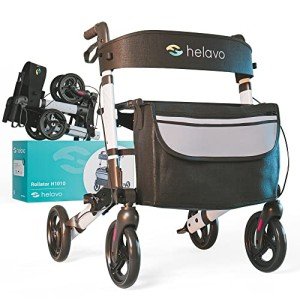Understanding Bariatric Walkers: A Comprehensive Guide
As the population ages and the occurrence of obesity boosts, the demand for adaptive mobility help, such as bariatric walkers, has increased substantially. These specialized walkers are developed to support heavier people, offering security, stability, and mobility. In this blog site post, we will explore the various elements of bariatric walkers, including their benefits, features, types, and considerations for use, guaranteeing you have an extensive understanding of this vital mobility aid.
What is a Bariatric Walker?
A bariatric walker is a type of mobility aid specifically designed to support people who are obese or obese. Unlike regular walkers, bariatric walkers are constructed with enhanced materials and features to supply increased sturdiness, stability, and weight-bearing capacity. They are a necessary tool to boost mobility, independence, and security for individuals undertaking rehab or those with persistent health conditions.
Key Features of Bariatric Walkers
Bariatric walkers come geared up with various features customized to the requirements of larger people. Here are a few of the crucial features one can anticipate:
| Feature | Description |
|---|---|
| Weight Capacity | Usually supports in between 300 to 600 pounds |
| Frame Construction | Made from robust products like aluminum or steel |
| Adjustable Height | Height can be changed to accommodate numerous users |
| Wide Base | Wider base for improved stability and balance |
| Hand Grips | Padded, ergonomic grips for convenience |
| Wheels | Can have two or four wheels for mobility choices |
| Devices | May include a seat, storage basket, or tray |
Types of Bariatric Walkers
When considering a bariatric walker, it's crucial to comprehend the various types offered:
Two-Wheel Bariatric Walker
- Features a lightweight frame with two front wheels.
- Perfect for users needing very little assistance while walking.
Four-Wheel Bariatric Walker
- Provides more mobility and frequently consists of a seat.
- Advised for users requiring more support and the alternative to rest.
Rolling Walker
- Comparable to four-wheel walkers but generally includes a braking system.
- Offers simpler navigation for bigger people.
Dual-Function Walkers
- Integrates features of standard walkers and rollators.
- Appropriate for users seeking versatility in mobility choices.
Walker with Seat
- Enables users to rest during walks, an essential feature for those with limited endurance.
Advantages of Using Bariatric Walkers
The benefits of utilizing a bariatric walker extend beyond mobility. A few of the most significant advantages consist of:
- Increased Safety: With sturdy building and construction and improved stability, bariatric walkers lower the risk of falls and injuries.
- Enhanced Mobility: Users can gain back self-reliance, moving about their homes and communities more conveniently.
- Improved Confidence: With the ability to move securely, people typically experience a boost in self-esteem and confidence.
- Aiding Rehabilitation: Essential for physical treatment and rehab, assisting in motion and recovery.
- Weight Distribution: Designed to support a larger weight circulation effectively, they promote better posture and balance.
Factors to consider When Choosing a Bariatric Walker
Selecting the ideal bariatric walker is crucial for guaranteeing security and convenience. Here are some necessary elements to consider:
- Weight Capacity: Always check the optimum weight limitation to guarantee the walker can accommodate the user's weight securely.
- Height Adjustability: Select a walker with adjustable heights to accommodate the user's stature.
- Foldability: Consider a foldable walker for easy transport and storage.
- Wheel Size and Type: Depending on the walking surface, bigger wheels may facilitate smoother movement over bumps and shifts.
- Storage Options: Additional features like baskets or trays can be important for carrying individual products.
FAQs about Bariatric Walkers
Q: How do I understand if a bariatric walker is ideal for me?A: Consult a healthcare expert or physiotherapist, who can assess your needs and suggest the most appropriate mobility aid. Q: Can bariatric walkers be utilized outdoors?A: Yes, many bariatric walkers are designed for indoor and outdoor use, particularly those with larger wheels. Q: How much do bariatric walkers normally cost?A: Prices can differ widely, generally varying from ₤ 100 to ₤
400, depending on the features and brand name. Q: Is assembly required
for bariatric walkers?A: Some designs come pre-assembled, while others might need basic assembly. Constantly check the item description. mouse click the following web site : How do I maintain my bariatric walker?A: Regularly check
the walker for loose parts, make sure wheels and brakes operate correctly, and tidy it routinely to keep it in ideal
condition. Bariatric walkers play an essential function in boosting mobility and promoting independence for much heavier people. With numerous styles, features, and factors to consider, it is necessary to find the
best walker that fits the user's particular needs. By understanding the info laid out in this guide, users and caregivers can make educated choices to help with much safer and more comfortable mobility. As individuals seek the very best options for mobility challenges, the bariatric walker remains a reliable and important choice for promoting an active and independent lifestyle, paving the
way for boosted quality of life.

